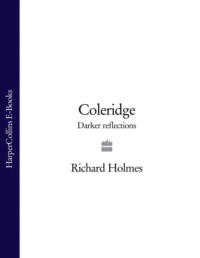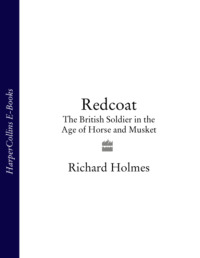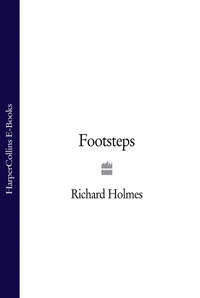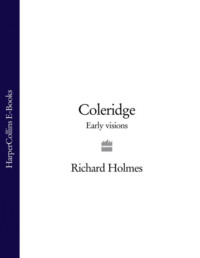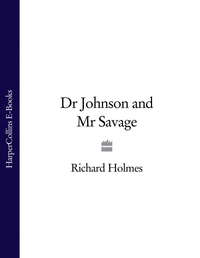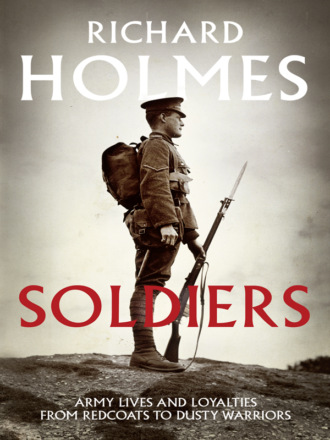
Полная версия
Soldiers: Army Lives and Loyalties from Redcoats to Dusty Warriors
James II’s own child, James, Duke of Berwick, one of the four offspring borne him by Arabella Churchill, emerged as a general of European stature. He had already served against the Turks in Hungary when, in 1688, he did more to check the disintegration of the royal army than his father. In French service after 1690, he was largely responsible for wrecking allied hopes in Spain during the War of Spanish Succession. Although his character showed that streak of inflexible cruelty that had marked his father’s, he was the most capable of the later Stuarts, and had become marshal of France by the time that a cannon-ball carried him off at Philippsburg in 1734.
William IV’s illegitimate son, George Fitzclarence, served in the Peninsula, became the army’s deputy adjutant general, and his father eventually made him Earl of Munster. All four of his boys served in the army or the navy; the youngest was killed in the assault on the Redan in the Crimea. Amongst George Fitzclarence’s grandsons were twin brothers, Edward, killed at Abu Hamid in the Sudan in 1897, and Charles, who won the VC with the Royal Fusiliers (first raised in 1685) in the Boer War, then transferred to the Irish Guards in its formation in 1900, and finally died as a brigadier-general on 11 November 1914 in the desperate fighting outside Ypres. His name heads the cruelly long list of officers and men missing in the Ypres Salient battlefields between 1914 and mid-1917, graven in stone on the Menin Gate memorial.
It would be easy to develop the theme more widely, but the point is already hammered home. The monarch was at the centre of a wide constellation of military officers, often serving in the regiments of the Household Division, who were familiar figures at many of the court’s activities, from official events at Buckingham Palace or Windsor, Royal Ascot or shooting parties at Sandringham. Members of the royal family serve as colonels-in-chief of regiments, and Court and Circular announcements still chart the passage of lieutenant colonels as they report at the palace to formally take over command. Although George VI was constitutionally more cautious than his predecessors, he encouraged senior officers to open their hearts to him. Field Marshal Sir Alan Brooke, CIGS (Chief of the Imperial General Staff) for much of the war, found the process very helpful. ‘At 3.15 went to see the King,’ he wrote on 21 December 1943, ‘who kept me for 1¼ hours. He was in excellent form and most interested in all details of conferences and of my visit to Italy. He has a wonderful knowledge of what is going on.’12 But regimental politics could corrupt even the most scrupulous monarch. In 1946, Field Marshal Montgomery, Chief of the Imperial General Staff, hoped to reduce the Foot Guards by the same proportion as the infantry of the line, but found his plans dashed when the major general commanding the Household Division appealed directly to the king. Nor should the long influence of Queen Elizabeth the Queen Mother be underestimated, especially as far as the Black Watch and the London Scottish were concerned.
The military importance of the monarchy goes beyond the ties of family, friendship, and familiarity. The significance of both the Dukes of York and Cambridge serving as commander-in-chief of the army for such long periods can scarcely be overstated. Moreover, some of the monarch’s most trusted servants were military officers, whether at court for short tours of duty as aides-de-camp or equerries, or in key long-term appointments like private secretary and assistant private secretary. The urbane and gossipy Frederick ‘Fritz’ Ponsonby was grandson of Peninsula veteran General Sir Frederick Cavendish Ponsonby. He served in the Grenadier Guards during the Boer War and the First World War. His court career started as an equerry to Queen Victoria in 1894, going on to be assistant private secretary to both Victoria and Edward VII, and ending up as lieutenant governor of Winsdor Castle till 1935, the year of his death.
His immediate superior in 1901–13 was Francis Knollys, long a civilian, but a former officer in the Royal Welch Fusiliers with good military connections. Both his father, a general and Crimean veteran, and brother served in the Scots Guards. Knollys’s successor as private secretary was the honest but humourless Arthur Bigge, better known by his peerage title of Lord Stamfordham. Bigge was a gunner who had served in the Zulu War of 1879, he was the queen’s private secretary for the last years of her reign, and then served George V in the same capacity for most of his life. He was succeeded by Clive Wigram, who had been commissioned into the Royal Artillery in 1893 and had then gone off to the Indian army. Wigram made his mark as assistant chief of staff to the Prince of Wales (the future George V) during his 1905–6 tour of India, returned to serve as equerry until George succeeded, and became the king’s assistant private secretary, going on to be private secretary between 1931 and his retirement, gaining the peerage that has generally rewarded royal servants of his status, in 1936.
Focusing on Wigram’s family is instructive. He was married to the daughter of a paragon of British India, Field Marshal Sir Neville Chamberlain. Their eldest son served with the Grenadier Guards in the Second World War and then commanded its 1st Battalion in 1955–6. He was married to the daughter of another Grenadier, General Sir Andrew ‘Bulgy’ Thorne, who had made his mark on history while staff-captain to Brigadier-General Fitzclarence, by whipping-in the fine counter-attack that enabled the Worcesters to repair the broken British line on the Menin Road on 31 August 1914. ‘The Worcesters saved the Empire’, wrote a grateful Field Marshal Sir John French, commander of the British Expeditionary Force.13 Not only did their eldest son, heir to the family’s barony, also serve in the Grenadiers, but so too did their son-in-law, Major General Sir Evelyn Webb-Carter, who commanded the Household Division in 1988– 2001. Clive Wigram’s grandson, Captain Charles Malet of the Coldstream Guards, has served in Afghanistan, and was an extra equerry to the queen at the time of writing.
Michael Adeane, maternal grandson of Lord Stamfordham, was private secretary to Elizabeth II for the first twenty years of her reign. He had taken over from Alan ‘Tommy’ Lascelles, unusually a yeomanry (territorial cavalry) officer rather than a regular, and handed over to Martin Charteris of the King’s Royal Rifle Corps. It was only with the latter’s departure in 1977 that military officers lost what had become firm tenure of this crucial post, although Robin Janvrin, who took over in 1999, had served in the Royal Navy for eleven years. It may be that his successor, Christopher Geidt, represents a definitive break with tradition, having been a member of the Foreign and Commonwealth Office before initially joining the royal household as assistant private secretary in 2002.
CHAPTER 3
PARLIAMENT’S ARMY

AS THE MONARCHY’S power has shrunk over the three and a half centuries of the army’s existence, so that of the House of Commons has increased. We can chart this process and its effect on the army through events like the constitutional settlement of 1688, the last royal veto of legislation in 1707, the great reform bills of the nineteenth century, and the 1911 Parliament Act. It has certainly not removed royal influence, but it has transformed the nature of political control. What is less obvious is that, as the process has spun on, the links between the army and the legislature have become progressively weaker, to the point where almost any major professional group is more widely represented in both houses of parliament than the armed forces. In one sense the development is as much social as political, with the army’s increasing professionalisation and diminishing size reducing the political visibility and impact of its officers.
Restoration parliaments imposed no control over the army, provided the king was able to pay for it. The 1661 Militia Act gave Charles II command of ‘all forces by land and sea and all forts and places of strength’, and both Charles and his brother James II proceeded to run the army as what John Childs calls ‘a department of the royal household under the command of the king and his nominees’.1 It had no foundation in common or statute law, and its code of discipline, the Articles of War, stemmed from the royal prerogative. It was not until 1689 that discipline was given the force of statute.
The senior regiment of infantry of the line, the Royal Scots (in existence since 1633 but allowed to claim seniority only from 1661), had fought at Sedgemoor in 1685 as the Earl of Dumbarton’s Regiment. It had previously served under Monmouth on the continent, and a poignant story has him looking out from Bridgwater church towards the royal camp and seeing the regiment’s saltire colours in the gloaming. He would be sure of victory, he sighed, with Dumbarton’s drums behind him.
In 1689 the new government of William and Mary was shipping troops to the Low Countries to fight the French. The fact that the army had not fought for James II the previous year reflected the defection of senior officers and James’s failure of will rather than its affection for William. Scots troops were particularly concerned about being sent abroad while English and Dutch units remained in Britain. After serious unrest along the line of march, the Royal Scots mutinied when they reached Ipswich; over 600 of them set off northwards. The deserters were rounded up with little bloodshed, escorted back to London, and shipped thence to Holland. Nineteen officers were tried, and all but one, who was executed on Tower Green, were simply stripped of their commissions.
The Commons at once passed the first of the many mutiny acts. In theory all it allowed the army to do was to inflict capital or corporal punishment for serious offences, thus meeting the demands of the moment, and it was not conceived as a means of asserting parliamentary control. Indeed, there were times during William’s reign when it lapsed altogether without bringing about a collapse of discipline. From 1690 to 1878 Parliament passed mutiny acts annually, and as time went on both their scope and intent changed. As late as 1761 it was decided that neither the act nor articles of war deriving from it were binding on the army when engaged in war abroad, although discipline in such circumstances was preserved through similar articles issued under the royal prerogative. In 1803 the Act was extended to include the army within or without the Crown’s dominions in peace or war. It was replaced by the Army Discipline and Regulating Act of 1879, itself superseded by the Army Act of 1881 which, just like the old Mutiny Act, had to be passed annually. By this stage it was, as the Manual of Military Law announced, the essential means of ‘securing the constitutional principle of the control of parliament over the discipline requisite for the government of the army.’2 This was in turn replaced by the Army Act of 1955, the current basis for military discipline, whose Section 69 – the catch-all ‘conduct prejudicial to good order and military discipline’ – has been the bane of the scruffy, ill-disposed or unlucky ever since.
Alongside the assertion of parliamentary control came a gradual shift of power as the army became first a department of state in its own right, and eventually part of a unified Ministry of Defence. The detail does not concern us here, but the salient features are worth noting. ‘The Sovereign is Commander-in-Chief,’ affirmed the Manual of Military Law, ‘unless the office is granted away.’ Such was often the case. The Duke of Marlborough, the army’s captain-general under Queen Anne, commissioned officers on his own authority, telling a delighted Lady Oglethorpe that her boy could have his promised ensigncy in the Foot Guards: ‘If you please to send me the young gentleman’s Christian name, his commission shall be dispatched immediately.’3 Sometimes the office was not filled, and sometimes its holders were ineffective, but as we have seen, the royal dukes of York and Cambridge both exercised substantial power.
The secretary at war was a civilian official, who had begun as the commander-in-chief’s secretary, based in the army’s headquarters which established itself at Horse Guards at Whitehall in 1722. The secretary at war became increasingly important, and in 1793 was made responsible for submitting the army estimates to parliament. Since the Restoration there had been two secretaries of state, peers or members of the House of Commons, initially for the northern and southern departments of Britain, but with their responsibility later refined to cover home and foreign affairs. A third secretary of state had been appointed from time to time. In 1794 the office became permanent, and its holder took charge of the army’s efforts in the war against revolutionary France. The secretary at war was now responsible to this secretary of state, a system which continued until 1855 when the Crimean reforms shifted all the former’s duties to the secretary of state for war. Although this minister’s effectiveness depended on many factors – not least hitting-power within a cabinet that might not have the army in the forefront of its thinking – he made steady inroads into the influence of the commander-in-chief, and in 1870 was made formally superior to him.
As part of the reforms that followed the Boer War, the office of commander-in-chief was abolished in 1904, and the Army Council came into being. It initially had seven members – the secretary of state, the chief of the imperial general staff, the adjutant general, the quartermaster general and the master general of the ordnance, as well as a finance member and a civil member. In 1906 the War Office crossed Whitehall from Horse Guards to the neo-baroque War Office Building. When the three service ministries merged to form the Ministry of Defence in 1963 the Army Council became the Army Board of the Defence Council, now established in the Ministry of Defence’s main building. This solid monolith was built in the 1930s, and Anthony Beevor surmises that the ‘muscular, large breasted women in stone’ surmounting the entrance date from the days when the Board of Trade had half-tenure. Although the style ‘falls short of the totalitarian architecture of that decade … it is still not a place calculated to lift the spirits.’4 The Army Board’s membership now includes six ministers, one official and five senior generals. The board’s executive committee (ECAB in unlovely abbreviation) dictates the army’s immediate policy, and comprises its most senior generals under the chief of the general staff, whose office lost its ‘imperial’ designation in 1964.
This shift of power away from the military and into the hands of politicians was paralleled by changes in the Civil Service. The Northcote–Trevelyan report of 1854 recommended that this should be divided into ‘mechanical’ and ‘administrative’ classes, and instituted processes that led to entry by open competition into a service that, until its corrosion by politics over the past decade, was a source of impartial professional advice to ministers. The Fulton Committee’s 1968 report judged that the Civil Service was too close to the traditional sources of power within the British establishment, and though its recommendations did not succeed in creating a British equivalent of the French Ecole Nationale d’Administration the process of breaking down formal barriers within the Civil Service, and between it and outside agencies, has continued steadily.
A by-product of all this was the rise of senior Civil Servants within ministries, notably their permanent under secretaries. They tend to remain in post longer than military officers, who serve in the ministry for between two to three years at any one time, and their links with senior colleagues across Whitehall often give them a sense of collegiate expertise which serving soldiers lack. To this must be added the influence of a Treasury, which, long before the onset of the 2008 financial crisis, was both intrusive and pervasive. No balanced assessment of the Ministry of Defence in the first decade of this millennium should ignore the slurry of management-speak that washes across its decks from time to time, and the many officials who have come to regard defence as they might a commercial organisation with the receivers in. It is certainly not a case of ‘boots versus suits’, for if there are civil servants who believe in the commodification of defence, there are those who work purposefully towards the preservation of military capability in times of real stringency. Conversely, some military officers, especially those ‘Whitehall warriors’ on a second or third tour of duty, become so wise in ‘the ways of the building’ that they sometimes forget that men and women in uniform are much more than ‘line serials’ on a spreadsheet. Part of this book’s contention is that soldiers have, across the army’s history, been subjected to treatment that has fallen far short of that to which they have reasonably been entitled, and it is not enough to maintain that this all happened in a distant land where things were done differently. We have done it in recent memory and, given half a chance, would still do it today.5
The increase of political control over the army, the diminution of the power of its senior officers, and the growing authority of the Civil Service were all products of wider developments. The two great wars of the twentieth century added their own weight to the process, emphasising that what happened on battlefields was only an index of a much broader national effort. Interwoven with all this has been the increasing professionalisation of the officer corps, a process that has ensured that officers are now educated for longer than ever before. The period spent at Sandhurst is now half the length it was in the 1960s, but many more officers are now recruited as graduates.
In the process the army has become estranged from the political nation. From the army’s birth until 1945 serving officers sat in both Houses of Parliament. Retired officers, and gentlemen holding commissions in the auxiliary forces, were added, to make a substantial military voice. The close association between officers and legislature had begun under Charles II and accelerated under James II, who saw officers as convenient placemen, deployable either to Westminster or to local councils. James encouraged officers to seek election not because he valued their opinions, but because he wanted their votes. Those elected in 1685 were told to ‘give their attendance to the House of Commons as soon as possible’, and James made it clear that they were not to simply to turn up as ordered, but to vote for the court party.6
Crossing the inflexible James II was fatal to a man’s career. That year Charles Bertie lamented that
My nephew Willoughby, my brother Dick, and brother Harry – the three battering rams of our family – are all turned out of their employment as captains … and I am also told that my nephew Peregrine Bertie – who is cornet [the most junior commissioned officer in a troop of horse] to his brother Willoughby – is also dismissed, so they have cleared the army of our whole family, which proving so unlucky a trade I would not have us bend our heads much to for the future.7
The precedent established by the later Stuarts proved durable. Army and navy officers regularly sat in parliament thereafter. Between 1660 and 1715 up to 18 per cent of MPs were serving officers, and subsequent general elections regularly returned at least 10 per cent. There were 60 military officers in the 558 members elected to the English House of Commons in 1761. Sixty-five were elected to the century’s last parliament in 1796. Gwyn Harries Jenkins argues that ‘from the late eighteenth century the military formed the largest single occupational group in the unreformed House.’8 Of the 5,134 MPs who sat in the period 1734–1832, 847 held commissions and of these two-thirds seem to have been career officers. The reform acts of the nineteenth century helped reduce the number of military MPs by making it harder for interest to procure a man’s election, at the same time that the army’s growing use as an imperial police force made it more difficult for officers to carry out duties that their constituents were now coming to expect of them. Traditionally the Foot Guards had furnished a disproportionately high number of MPs, pointing not simply to ‘a close link between wealth, birth and military-cum-parliamentary activity’, but to the fact that it was easier for officers quartered in London to get in to the House than it was for their comrades in the marching regiments, scattered across realm and empire.9 In 1853 the military, with its 71 sitting MPs, had been eclipsed by the law and their 107 solicitors or barristers – the largest profession in the house. By 1898 there were still 41 officers in the house (all but four of them Conservatives) and 165 lawyers.
From 1660 until 1945, when the serving military were no longer allowed to sit in parliament, most military MPs were officers, though there were a handful of exceptions, like Sergeant W. R. Perkins MP, called up for service with the Royal Air Force Volunteer Reserve in 1939. So too were the huge majority of former members of the armed forces who were elected to the Commons. There was one remarkable exception. William Cobbett, born in 1762 to an‘honest, industrious and frugal’ labouring family, joined the 54th Regiment in 1784. He had trudged all the way to Chatham to enlist in the Marines, only to be assured by the recruiting sergeant that they were full up. His literacy and steady ways soon brought promotion to corporal, and he went on to be a regimental clerk, using his spare time to study ‘Dr Louth’s Grammar, Dr Watt’s Logic … Vauban’s Fortifications and the former Duke of York’s Military Exercises and Evolutions’. Promoted to sergeant major, at a time where there was only one in each battalion, he took on much of the day-to-day work of running his unit, for the adjutant was ‘a keen fellow, but wholly illiterate’ and the other officers were distinguished by ‘their gross ignorance and vanity’.10
Cobbett was discharged on his battalion’s return from Nova Scotia in 1791, and at once set about the prosecution of some of his former officers for corruption. The attempt misfired, and he fled abroad to avoid retribution: while in America he wrote pro-British articles under the name of Peter Porcupine. Soon after his return he started the news-sheet Weekly Political Register, and in 1802 began publishing Parliamentary Debates, forerunner of the modern Hansard. Refusal to bribe voters lost him the Honiton election in 1806 and accelerated his shift from Tory to radical. In 1810 the Register’s furious condemnation of the flogging of militiamen by German soldiers saw him sentenced to two years imprisonment for treasonous libel. On his release he was honoured by a huge dinner presided over by Sir Francis Burdett, a leading champion of reform.
Cobbett deftly changed the format of the Political Register from newspaper to pamphlet to avoid tax, and it was soon selling 40,000 copies a week. In 1817 he left for America to avoid prosecution for sedition. After his return repeated attacks on the government culminated, in 1831, in prosecution for an article supporting the machine-breaking and rick-burning of the Captain Swing rioters. Cobbett conducted his own defence and was triumphantly acquitted. He was a major political figure and author. His Rural Rides was an affectionate description of an old, honest countryside progressively corrupted by the seepage of poison from the towns. It was first serialised in the Register and then published as a book in 1830. Despite repeated attempts to get into Parliament, he would have to wait until the 1832 Reform Act, when he was elected for Oldham. By now he was a confirmed radical, though his beliefs were shot through with a profoundly conservative yearning for a pre-industrial world of honest toil, interlaced with duty, and for political dispute across the class divide to be undertaken ‘with good humour, over a pot or two of ale’.11
A conflict soon developed between the constitutional theory that an officer-MP required no permission to attend to his parliamentary duties and could express an opinion freely, and the awkwardness of giving military pay to non-serving men who might make statements of which the government or army might disapprove. In December 1880 Major John Nolan, MP for Galway North, was appointed a Conservative whip, although he was on full pay and commanding a battery on its way to India. The Speaker thought that the best solution was for officers to be seconded from the service on election, but, given the fact that MPs were not then paid, this smacked of penalising the peoples’ choice. It was felt safest to let the matter run on unresolved, and Nolan left the army in 1881.




